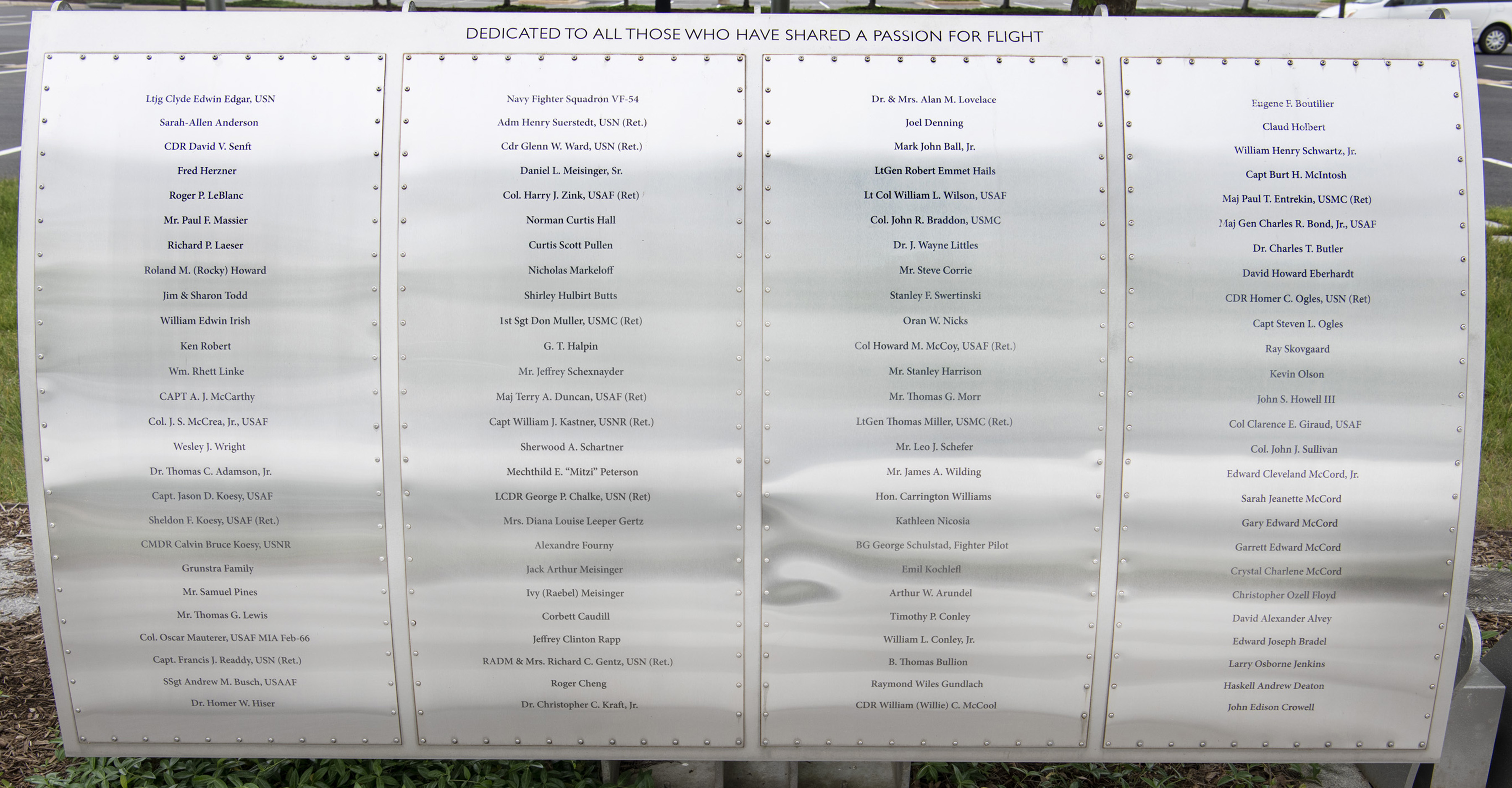Foil: 39 Panel: 4 Column: 1 Line: 6
Wall of Honor Level: Air and Space Leader
Honored by:
Ms. Rebecca R. Stuart
General Bond was born in 1915 in Dallas, Texas where he graduated from Forest High School as Cadet Colonel of the Junior Reserve Officers Training Corps (JROTC) and as a member of the National Honor Society. As a junior In high school in 1932, he began his military career by enlisting in the Texas National Guard. In March 1938 he entered the Army Air Corps Aviation Cadet Program at Randolph Field, Texas, and graduated in February 1939 earning his commission and pilot wings.
His first assignment was copilot in the Y1B-17 Flying Fortress and assistant operations officer in the 2nd Bomb Group, 49th Bomb Squadron, Langley Field, Virginia. This unit was equipped with 14 Y1B-17s, the only Y1B-17s in the Army Air Corps. At the time, the aggressors of the expanding wars in Asia and Europe were posing increasing threats of war against the US. These threats moved President Roosevelt to order the 2nd Bomb Group to make an unprecedented, long range, intercontinental flight of Flying Fortresses to South America under the guise of a Goodwill Gesture, but in reality a signal to potential aggressors of the US possession of overwhelming airpower. Due to his demonstrated knowledge and skill in flying the aircraft, Bond was chosen to copilot one of the 6 Flying Fortresses in the Goodwill Flight. Significant lessons in navigation, logistics, radio communications, and high altitude oxygen and deicing requirements were gleaned from this pioneering flight.
In June 1941 Bond left the Air Corps to volunteer as one of the 100 fighter pilots in General Clair Chennault's American Volunteer Group (AVG) in China. The mission of the AVG was to help stop the invading Japanese military forces. Of more urgency was the desperate need to halt the carnage being inflicted daily on thousands of innocent civilians by Japanese bombing raids on undefended cities. Serving under General Chennault, the legendary pioneer in advanced fighter tactics, Bond learned both new air tactics that got amazing results and about an expansive air raid warning system effectively conducted by the Chinese civilian populace. In 8 months, December 1941 to July 1942, the AVG, better known as the famous Flying Tigers, destroyed an estimated 640 enemy aircraft, losing only 12 P-40s in aerial combat and 61 on the ground. The odds in the air were usually 20 enemy aircraft to one P-40. The AVG never had more than 49 P-40s ready for combat during the 8-month period. The AVG was one of the most effective military forces in history. Strictly disciplined and mentally focused in aerial combat, Bond was credited with 9 enemy aircraft destroyed and survived being shot down twice. The AVG was disbanded in July 1942.
Bond reenlisted in the Army Air Corps (AAC) and was directed in Oct 1942 to take command of the Eighty-First Fighter Squadron at Orlando, Florida. It was a unit in the Air Force School of Applied Tactics where realistic combat tactics and techniques were taught members of the newly activated fighter groups of the rapidly expanding AAC.
In July 1943, General "Hap" Arnold, Chief of Staff of the AAC, selected Bond to be Chief of the Air Division, US Military Mission to the USSR in Moscow, and as aide and personal pilot to Ambassador W. Averell Harriman. Bond remained at this assignment until October 1944.
Having experience in both the Asian and European Theaters of Operation made him especially well qualified to help develop a strong air defense force for the continental US, a long neglected part of the US military posture. Thus, for the next 16 years Bond served in key positions in the air defense of the US. Initially, in October 1944, he was assigned as Deputy Chief of Staff, Operations, 2nd Air Force, Ent AFB, Colorado for one year. In January 1947 he was assigned as a student to Texas A&M University. He graduated in 1949 with a BS in Management Engineering. He was then reassigned to various Air Defense positions for the next 10 years.
He was promoted to Brigadier General in 1957 while serving as Assistant Deputy Chief of Staff, Operations, Headquarters Air Defense Command, Ent AFB, Colorado. He received his second star in July 1963, while serving as Deputy Commander, Headquarters, 5th Allied Tactical Air Force (SHAPE), Vicenza, Italy.
He was reassigned in 1967 as Vice Commander, 9th Air Force, Tactical Air Command, Shaw AFB, South Carolina. He had to reorient his specialty from air defense to tactical air operations. Two and a half years later, General John P. McConnell, Chief of Staff of the Air Force, assigned Bond as Deputy Commander of the 7th and 13th Air Force Headquarters, Udorn, Thailand. In this assignment he was responsible not only for tactical air operations, but also for coordination and diplomatic relations between ambassadors of neighboring nations and his Headquarters.
In June 1967 he returned to the United States, and was awarded the Air Force Distinguished Service Medal, and given Command of the 12th Air Force with Headquarters at James Connally AFB, Texas. As commander, he was responsible for the overall training and combat readiness of tactical fighter, airlift and reconnaissance units west of the Mississippi River. He retired while in this assignment on July 31, 1968.
Wall of Honor profiles are provided by the honoree or the donor who added their name to the Wall of Honor. The Museum cannot validate all facts contained in the profiles.
Foil: 39
